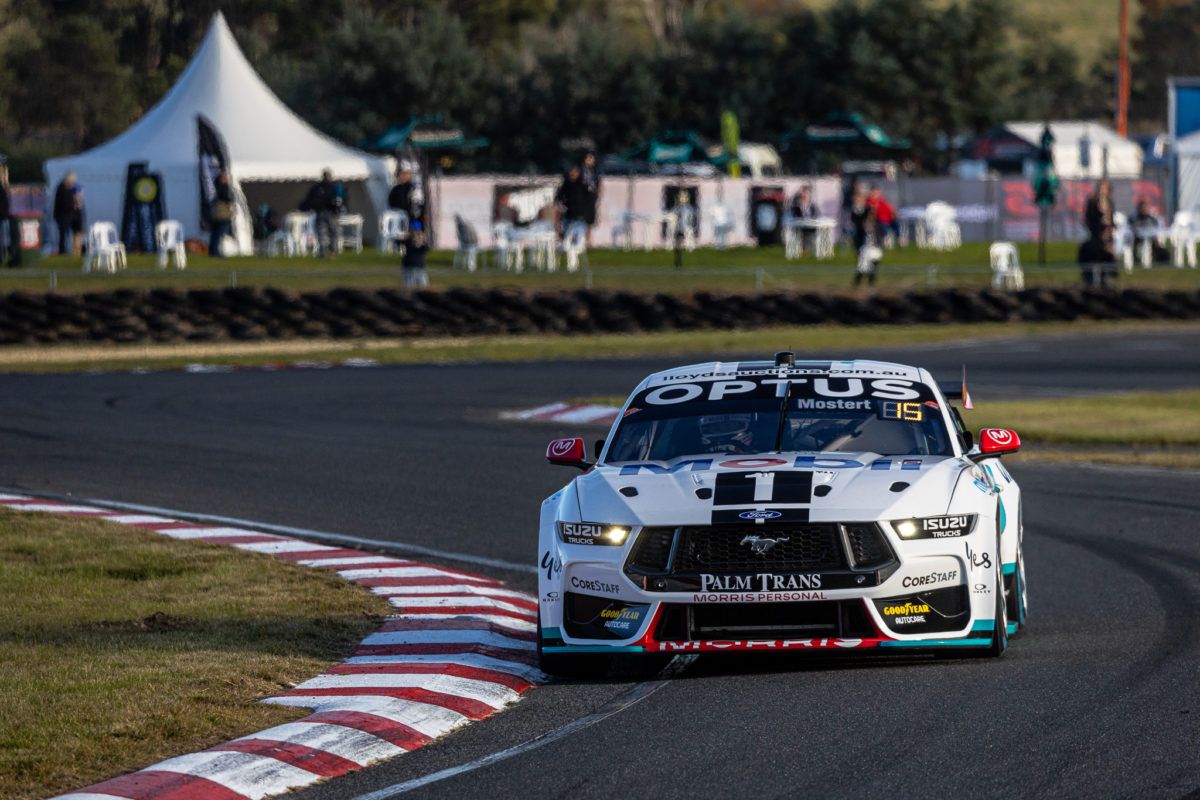

Ford remains uncertain as to when Supercars will implement the measures which it is set to adopt in a bid to ensure Gen3 engine parity.
As first reported by Speedcafe, Supercars has been looking into the use of a transient dynamometer for more rigorous parity testing of the Ford Mustang and Chevrolet Camaro engines, and also has torque sensors on order.
In the meantime, the Mustangs have run with a different engine calibration at each of the previous two events of the season, and are set to have another new map this weekend at Hidden Valley.
Some of those tweaks have been made as driveability “tidy-ups”, to use the words of one Ford team boss, rather than outright performance, and acceleration remains a question mark.
Ford Performance Motorsports Global Director Mark Rushbrook has previously declared the succession of map changes an interim measure but nevertheless welcomes the collaboration with Supercars on that front.
However, he is eager to see the implementation of the transient dynamometer testing and installation of torque sensors.
“I think the comments I would make on [parity] is progress,” Rushbrook told select media, including Speedcafe, just ahead of this weekend’s Betr Darwin Triple Crown.
“Progress, in the sense that Supercars has actually been really good to work with in terms of making calibration changes as we go to Darwin, and that’s good. The team senses, feels like they’re open to ideas and making progress and making changes there.
“But I think what hasn’t changed is, there still data transparency limitations, or lack of data transparency, to really understand what those changes are going to need relative to the competition on track.
“We do understand that there is still a commitment from Supercars’ senior management and the board to move towards the transient dyno and the torque sensors, but I don’t know the dates or timing for that.
“But, I do believe that it is a very important part to have every process in place to truly deliver parity – or confirm parity – and be able to move forward from that.
“But, that’s going to take time. Even once you get access to those resources, you don’t put the hardware on the transient dyno and get an answer that same day.
“It’s going to take time and processes and won’t be an immediate remedy.”
As previously reported, it has been theorised that the 5.4-litre quad cam engine in the Mustang, with its relatively narrow bore, has different transient characteristics to the 5.7-litre pushrod which powers the Camaro.
Speedcafe now understands that an attempt was made to account for the inertial difference through different flywheels although whether any disparity in that area was perfectly offset, and the magnitude of any other transient discrepancies (if indeed they exist), remains to be seen.
That is why the transient dynamometer has been pushed as a parity testing tool, while the use of torque sensors would provide a ‘real-world’ measure.
Practice at Hidden Valley starts on Friday at 10:45 local time/11:15 AEST.




















Discussion about this post